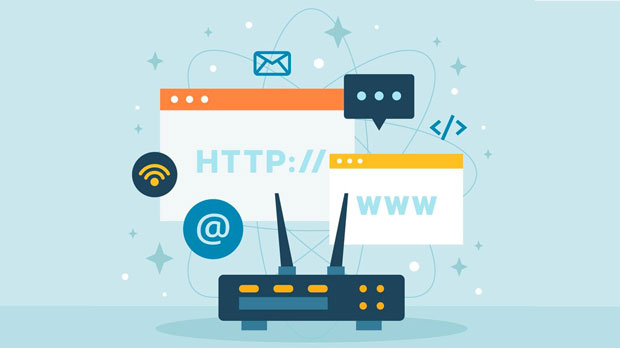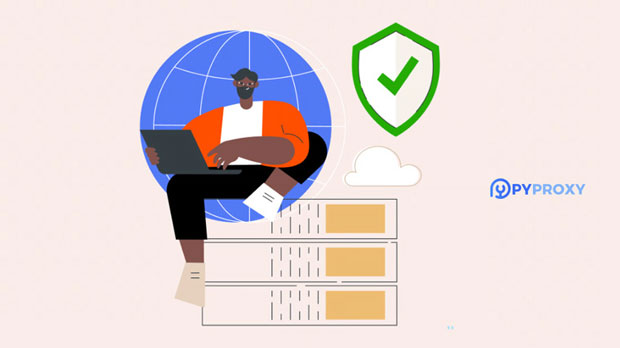In the world of online privacy, speed, and security, proxies have become essential tools. Two common types of proxies are 4G proxies and WiFi proxies. When it comes to IP quality, there are several factors to consider. 4G proxies typically offer more dynamic and residential IPs, whereas WiFi proxies are usually tied to fixed locations with more predictable IPs. This article will explore the differences in IP quality between the two, analyzing factors such as speed, reliability, location diversity, and security, to help you determine which one is the better choice for your needs. Understanding 4G Proxy and WiFi ProxyTo better compare the two, it’s essential to understand what each type of proxy is and how it works.1. 4G Proxy: A 4G proxy uses mobile network connections provided by telecom companies, meaning the IP addresses come from real mobile devices. These proxies are dynamic, changing frequently as mobile networks assign new IPs. This makes them ideal for use cases like web scraping, accessing geo-restricted content, and maintaining anonymity. They are often regarded as high-quality proxies because they mimic the behavior of real users and provide access to mobile networks' vast geographical reach.2. WiFi Proxy: A WiFi proxy, on the other hand, operates via traditional broadband internet connections. These proxies tend to be more stable and consistent in terms of IP addresses. They are often tied to fixed locations, such as homes or offices. While WiFi proxies provide reliable access to the internet, they may be subject to certain limitations, such as a smaller pool of IPs and less geographical diversity compared to 4G proxies.IP Quality: Speed, Reliability, and LatencyWhen it comes to proxy performance, speed and reliability are paramount. Let's break down how 4G proxies and WiFi proxies compare in these areas:1. Speed: - 4G Proxy: The speed of 4G proxies can vary significantly depending on the network strength and the mobile carrier. Generally, 4G networks offer fast speeds, especially in urban areas. However, in rural or remote locations, the network may be slower, affecting the proxy's performance. Additionally, mobile networks may experience congestion during peak times, leading to slower speeds. - WiFi Proxy: WiFi proxies usually offer more consistent speeds because they are reliant on stable broadband internet connections. The speed of a WiFi proxy largely depends on the quality of the broadband connection. In general, WiFi proxies offer a more predictable performance but might not match the high-speed capabilities of 4G proxies in certain conditions.2. Reliability: - 4G Proxy: 4G proxies tend to be less reliable than WiFi proxies due to the dynamic nature of mobile networks. IPs change frequently, and users may encounter interruptions or inconsistent performance when switching from one IP to another. Additionally, mobile networks can sometimes experience temporary outages or poor signal strength in certain regions. - WiFi Proxy: WiFi proxies are generally more reliable. Since they are based on fixed broadband connections, the chances of encountering issues are lower. Users can rely on WiFi proxies for steady performance, making them ideal for applications that require consistency, like streaming or online banking.3. Latency: - 4G Proxy: Latency in 4G proxies tends to be higher, particularly in areas with weaker signal strength. Mobile networks can introduce delays, especially when switching between different base stations or regions. - WiFi Proxy: WiFi proxies usually have lower latency because they operate over stable and well-established broadband networks. The consistent connection allows for faster data transmission and reduced delay, which is beneficial for activities like gaming or real-time communication.Geographical Reach and Location DiversityLocation is an important factor when evaluating IP quality. Having access to a wide variety of IPs from different locations can provide several advantages, such as bypassing geo-restrictions and maintaining anonymity.1. 4G Proxy: - Geographical Reach: One of the key advantages of 4G proxies is their ability to offer a wide geographical range. Since mobile networks are spread across cities, towns, and rural areas, 4G proxies can provide IPs from almost anywhere. This makes them perfect for businesses and individuals who need access to global markets or who require local IPs from specific countries for web scraping, SEO testing, or bypassing geo-blocked content. - Location Diversity: The location diversity of 4G proxies is unparalleled. Users can access IPs from urban centers, rural areas, and even specific regions in various countries, which makes 4G proxies the preferred option for those who need a large pool of diverse IPs.2. WiFi Proxy: - Geographical Reach: WiFi proxies, while reliable, tend to offer more limited geographical reach compared to 4G proxies. Since they are tied to fixed locations, the pool of available IPs is constrained to specific cities or regions. This could be a limitation if you need access to IPs from different parts of the world. - Location Diversity: The location diversity of WiFi proxies is limited compared to 4G proxies. Since the IPs are often linked to homes or businesses, users will mostly get IPs from the same location or a few nearby areas. This can be problematic for users who need to simulate access from different locations.Security and AnonymityWhen it comes to online security and anonymity, both 4G proxies and WiFi proxies offer distinct advantages and disadvantages.1. 4G Proxy: - Anonymity: 4G proxies are often seen as more anonymous due to their dynamic nature. Since IP addresses frequently change, it is harder to track a user’s activities over time. Moreover, 4G proxies are seen as less suspicious because they originate from mobile networks, which are widely used by regular internet users. This makes them suitable for high-anonymity tasks such as web scraping, ad fraud prevention, and avoiding bot detection systems. - Security: While 4G proxies can offer good security, they are more vulnerable to certain threats, such as attacks on mobile networks or vulnerabilities in telecom infrastructure. Mobile carriers can also block or throttle proxy connections, leading to potential disruptions in service.2. WiFi Proxy: - Anonymity: WiFi proxies may be easier to trace due to their more stable and consistent IP addresses. Since WiFi proxies often come from fixed locations, they can be easier to associate with specific individuals or businesses. This may compromise the level of anonymity required for certain tasks. - Security: WiFi proxies tend to be more secure because they operate over established broadband networks, which typically have stronger encryption protocols. However, they can still be vulnerable to attacks, especially if the user is connecting to an unsecured WiFi network.Which Proxy Type is Better for You?Ultimately, the choice between 4G proxies and WiFi proxies comes down to your specific needs.1. Choose 4G Proxy if: - You need a large variety of IPs from different locations. - Anonymity and IP rotation are important to you. - Your use case involves activities like web scraping or bypassing geo-blocked content. - You are willing to accept occasional speed fluctuations or network instability.2. Choose WiFi Proxy if: - You require more stable and reliable performance for activities like streaming or banking. - You don’t need a large pool of diverse IPs. - You prefer a lower latency connection with more consistent speed. - Security and anonymity are secondary to reliability.ConclusionBoth 4G proxies and WiFi proxies have their strengths and weaknesses in terms of IP quality. 4G proxies shine in geographical reach, dynamic IPs, and anonymity, making them ideal for certain applications. On the other hand, WiFi proxies offer greater stability, reliability, and lower latency, making them better suited for other use cases. By understanding the nuances of each, you can make an informed decision based on your requirements.
Aug 12, 2025



































































